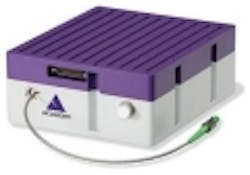DARPA takes aim at revolutionary unmanned ground vehicle improvements to enhance military robot capability on the battlefield
ARLINGTON, Va., 26 May 2010.Military robotics experts at the U.S. Defense Advanced Research Projects Agency (DARPA) in Arlington, Va., are asking for industry's help improve scientific understanding of how robots move over the ground and manipulate objects in natural surroundings, and improve robot manufacturing, design tools, and control algorithms.
DARPA released a broad agency announcement Tuesday (DARPA-BAA-10-65) for the robotic Maximum Mobility And Manipulation (M3) program to create and demonstrate significant scientific and engineering advances for ground robots.
Although military robots hold great promise for improving human effectiveness in defense operations, as well as saving lives in explosive ordinance disposal (EOD) missions, the mobility and manipulation capability of today's robots is poor, compared to humans and animals, DARPA officials point out. If these limitations were overcome, however, robots such as unmanned ground vehicles (UGVs) could help fighting forces far more effectively than they can today across a wide range of missions, officials say.
The DARPA M3 program aims at discovering and developing fundamentally new understanding and approaches in robotics that will be applicable to many applications and environments. Technologies developed in this program also might benefit manned vehicles in capabilities such as terrain classification, stability control, and subsidence warning.
M3âs control efforts will focus on approaches using augmented teleoperation, also known as supervised autonomy, with full autonomy, cognition, reasoning, high-level decision-making, high-level decision-making under uncertainty and other higher-level cognitive functions will come later to the program.
The M3 program will consist of four tracks: design tools, fabrication methodologies, control methods, and technology demonstration prototypes.
The control methods segment is one of the most important parts of the program, and seeks to develop intermediate-level controls including environment-based dynamic gait selection, dynamic gait and body mass modulation, and dynamic stability control. Examples of control methods include modeling animal mobility and manipulation, dynamic stability control, exploring variable-compliance mobility, and exploring variable-compliance manipulation.
Companies interested should send proposals to DARPA no later than 19 July 2010, with proposal abstracts due to DARPA by 14 June 2010.
For questions or concerns, contact DARPA's Gill Pratt by e-mail at [email protected], or by post at DARPA/DSO-65, ATTN: DARPA-BAA-10, 3701 North Fairfax Dr., Arlington, VA 22203-1714.
More information is online at https://www.fbo.gov/spg/ODA/DARPA/CMO/DARPA-BAA-10-65/listing.html.
Follow me on TwitterJoin the PennWell Aerospace and Defense Media Group on Linkedin at http://bit.ly/9MXl9
Become a fan of Military & Aerospace Electronics on Facebook at http://bit.ly/1VGM0Q
Post your aerospace and defense-related material to the #milaero community on Twitter. Use the #milaero hashtag.
Join your industry colleagues in the Command Post community online at http://community.milaero.com
